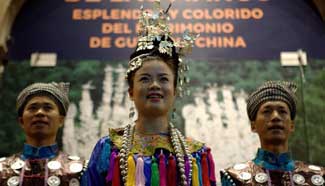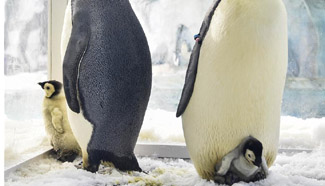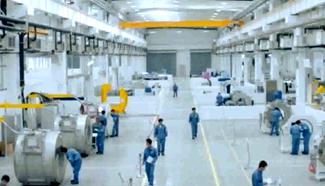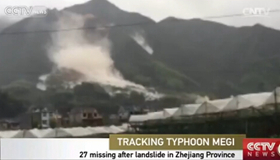SAN FRANCISCO, Sept. 29 (Xinhua) -- The American Society of Civil Engineers (ASCE) has included, for the first time, a chapter on tsunami hazards in the national construction standards.
The new edition, known as ASCE 7-16, was developed by about 20 engineers on the ASCE subcommittee that began its work in late 2010, a few months before the March 2011 earthquake and tsunami that devastated Japan, and was announced on Wednesday.
"We weren't reacting," said Dan Cox, a professor of civil and construction engineering in the Oregon State University (OSU) College of Engineering and a member on the ASCE subcommittee. "We were trying to do this in advance. After the 2011 event, interest accelerated regarding how to build things safely in a tsunami zone."
Based in part on work done at OSU's O.H. Hinsdale Wave Research Laboratory, the tsunami standards are only for steel-reinforced concrete buildings in "inundation zones" in coastal areas, which in the future may be stronger and safer with only moderate increases in cost, according to a news release from OSU. They will not apply to wood-frame structures.
The large wave flume at Hinsdale lab played a major role in producing the data used in developing the tsunami standards, said Cox, formerly the lab's director and now the head of the Cascadia Lifelines Program, a research consortium now working to mitigate infrastructure damage in the U.S. Pacific Northwest from a major earthquake on the Cascadia subduction zone.
OSU and eight partners from both the public and private sectors have begun five research projects. "One of the big projects was debris," Cox said. "What force does debris have, and how can you build a column to keep a building in place if debris were to hit it? Now we have equations to use to size that column to withstand a large piece of debris, like a shipping container."
Cox and other subcommittee members went to Japan after the 2011 tragedy to study what had worked and what didn't. "We got enough information to estimate hydraulic forces and understand damage patterns, and we used this to validate what we were doing," Cox said.
He noted that the tsunami standards will have the most impact on engineers designing and building structures less than about five stories in height. Above five stories, even-stronger building codes will take precedence over codes to protect smaller structures from tsunamis.
While the new standards will add some expense to the cost of a two- or three-story building, "the structural cost of a building is less than 10 percent," Cox said. "It will be more expensive but it doesn't triple the cost. When you make a building twice as strong, it doesn't cost twice as much."
The ASCE 7-16 standards are good for six years and will become part of the International Building Code. In the United States, it is up to each state to decide whether to adopt new codes in their entirety, partially in a modified format, or not at all.










